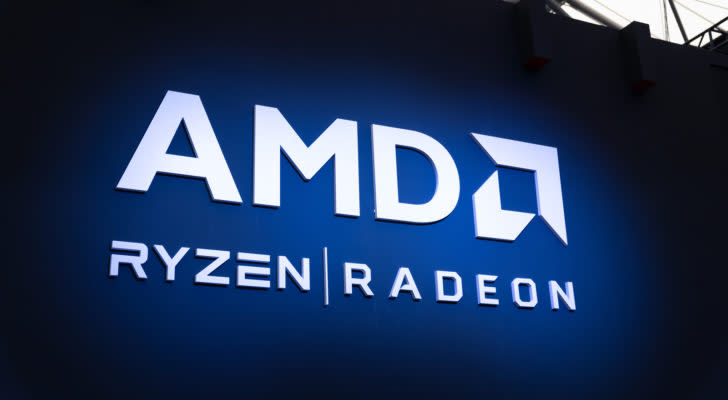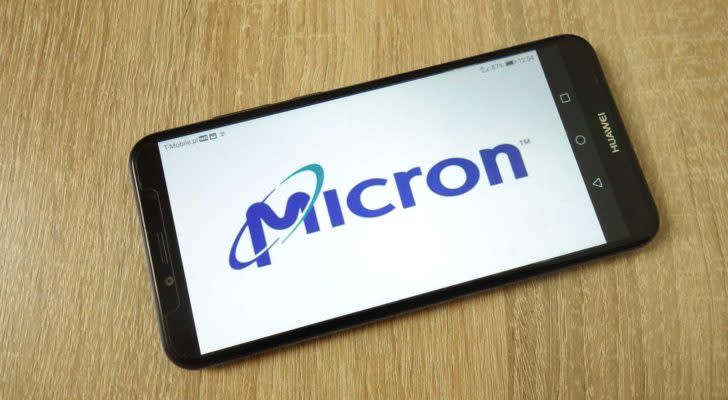7 Semiconductor Stocks Worth Buying as Technology Accelerates
The impact of the novel coronavirus pandemic has demonstrated how the faster pace of digital transformation in society is here to stay. During the bull run of the past decade, semiconductor stocks have been essential drivers of the broader technology sector’s upside.
Although they were initally among the shares that sold off rapidly during the Covid-19 triggered selloff in February and March, most chip stocks have had a remarkable comeback since hitting 52-week lows in late March. So far in 2020, the widely followed Philadelphia Semiconductor Index is up over 20%. Therefore, today, we’ll discuss seven semiconductor stocks worth buying as technology accelerates.
Semiconductors are the brains inside electronic devices. Chips are used in a wide range of products in computing, telecommunications, gaming, transportation, military systems and healthcare. They are typically behind technology innovation. As a result, shares of semiconductor companies usually act as a bellwether for the technology sector as a whole. For example, when smartphone sales increase or fall, semiconductor stocks are impacted. A similar relationship holds between shares of chip stocks and the sales of personal computers, servers for data centers and other large-end markets for microprocessors.
InvestorPlace - Stock Market News, Stock Advice & Trading Tips
Put another way, the semiconductor industry is cyclical. During periods of high demand, upturns occur. There may also be supply shortages, leading to higher prices and revenue growth. Thus profits of chip companies may ebb and flow dramatically. It’s never easy to know whether the downside of a given cycle might take longer than previously expected.
In 2019, global semiconductor spending was over $400 billion. The U.S. accounted for nearly half of the amount. Numbers from the Semiconductor Industry Association show that chips have become the our fourth-largest export.
In addition, for most semiconductor companies, China is both a consumer and a supplier. China consumes about 50% of all semiconductors made worldwide. Furthermore, many U.S. technology companies either have manufacturing plants in China or use Chinese companies in their supply chains. Thus, in 2018 and 2019, pressures like the U.S.-China trade war weighed significantly on the sector’s outlook.
At present, the current health and economic environments in the U.S. and globally present an array of uncertainty. Meanwhile, we are finishing a busy earnings season and getting ready to look forward to the Presidential election excitement. As a result, given the recent stellar increase in the prices of many semiconductor stocks, there may likely be short-term volatility and profit-taking in the sector in the coming weeks.
However, as new frontiers in technology — such as the internet of things (IoT), artificial intelligence (AI), autonomous driving and 5G — are developed, I am are bullish on the future of the semiconductor industry.
With that in mind, here are seven semiconductor stocks that could be appropriate for long-term portfolios:
Advanced Micro Devices (NASDAQ:AMD)
Intel (NASDAQ:INTC)
iShares PHLX Semiconductor ETF (NASDAQ:SOXX)
Micron Technology (NASDAQ:MU)
Nvidia (NASDAQ:NVDA)
Qualcomm (NASDAQ:QCOM)
SPDR S&P Semiconductor ETF (NYSE:XSD)
Let’s look at what makes each among the best to buy now.
Semiconductor Stocks: Advanced Micro Devices (AMD)

Source: Joseph GTK / Shutterstock.com
52-Week Range: $27.43-$87.29
Current Dividend Yield: N/A
Advanced Micro Devices was founded in 1969 as a Silicon Valley startup focusing on leading-edge semiconductor products. Today, it has grown into a global chip company with a focus on developing high-performance computing and visualization products. As a rival to both Intel and Nvidia, it is also number 460 on the Fortune 500 company list.
Year-to-date, AMD stock is up about 75%.
On July 28, AMD released solid Q2 results. It announced revenue of $1.93 billion, operating income of $173 million, net income of $157 million and diluted earnings per share of 13 cents. Non-GAAP earnings were 18 cents per share. The company reports in two segments:
Computing and Graphics (revenue was revenue was $1.37 billion, up 45% YoY and down 5% quarter-over-quarter. YoY higher revenue was driven by strong Ryzen processor sales. The quarter-over-quarter decline was due to lower graphics processor sales);
Enterprise, Embedded and Semi-Custom (revenue was was $565 million, down 4% YoY and up 62% quarter-over-quarter. Revenue was lower YoY due to lower semi-custom product sales largely offset by higher EPYC processor sales. The quarter-over-quarter increase was driven by higher EPYC processor and semi-custom product sales).
Total revenue was up 26% year-over-year (YoY) primarily driven by higher Computing and Graphics segment revenue. Revenue was up 8% quarter-over-quarter primarily driven by higher Enterprise, Embedded and Semi-Custom segment revenue.
Gross margin was 44%, up 3% points year-over-year and down 2% points quarter-over-quarter. The YoY increase was primarily driven by Ryzen™ and EPYC™ processor sales. The quarter-over-quarter decrease was due to increased semi-custom product sales.
Finally cash and cash equivalents were $1.78 billion at the end of the quarter. AMD expects Q3 2020 revenues of $2.55 billion (+/-$100 million), indicating YoY and quarter-over-quarter growth of 42% and 32%, respectively.
Wall Street noted that AMD has been taking market share from Intel in the server processor market. Management wants to reach double-digit market share in that space.
In summary, it was a great quarter which ended with a robust outlook. AMD stock deserves to be on the long-term buy list as one of the go-to semiconductor stocks to buy.
Intel (INTC)

Source: Kate Krav-Rude / Shutterstock.com
52-Week Range: $43.63-$69.29
Current Dividend Yield: 2.7%
Santa Clara, California-based Intel is also known as “Chipzilla.” On July 23, it announced Q2 results. Revenue of 19.7 billion was up 20% YoY. Intel reports earnings by two main segments: Data-centric and PC-centric. Data-centric revenue grew 34%, accounting for 52 percent of total revenue; PC-centric revenue grew 7% YoY.
PC-centric includes Intel’s PC and mobile-device chip business. The central processing unit (CPU) is the “compute” in the computer. This segment makes the CPUs.
The chip giant highlights that the data center is at the heart of its transformation from a PC company to one that powers the cloud. Going forward, DCG is expected to be the company’s main growth engine.
Chipzilla controls nearly three-quarters of the CPU market, and Intel processors are the main component — “Intel Inside” — in most of the world’s personal computers and servers. Yet, the worldwide PC market, which is also Intel’s core market, has been at best flat for the past few years.
Over the past few years, the decline of PCs has also affected the price of Intel stock as until recently the shares have traded in a rather tight range. Now Intel management is increasingly on a mission to redefine the company and restructure itself to better match the needs of customers and the growth in data.
We are all witnessing the fact that computing is increasingly becoming personal and incorporated into many more aspects of daily life. Recent technological advancement can be summarized by growth in data centers, Internet of Things (IoT) and memory. Memory complements data centers and IoT, enabling systems to be faster.
Intel currently holds about 90% share of the data center server market, which has been a consistent growth driver for the company. As the world becomes more connected and focuses on smart devices, there will likely be more demand for data and connectivity to devices, fueling growth in Intel’s DCG segment and possibly stock price.
In the Q2 report, however, management said that Intel’s 7-nanometer chips would be delayed and fall a year behind schedule. As a result, INTC sold off, pushing valuation to attractive levels. If you are looking for a semiconductor stock with a reliable dividend, too, then INTC stock needs to be on your watchlist.
iShares PHLX Semiconductor ETF (SOXX)

Source: Shutterstock
52-Week Range: $167.79-$301.02
Current Dividend Yield: 1.1%
Expense Ratio: 0.46% per year, or $46 on a $10,000 investment
As one of the largest semiconductor exchange-traded funds (ETFs), the iShares PHLX Semiconductor ETF is a cap-weighted fund, tilting toward the largest semiconductor stocks. Its benchmark index is the SOX.
The ETF currently has 30 holdings. Nvidia, Qualcomm, and Texas Instruments (NASDAQ:TXN) are its three largest holdings, making up for over 24% of the fund’s roster.
InvestorPlace’s Louis Navellier highlights, “Moore’s Law says that the number of transistors on a silicon chip will double every two years. That premise of ever-expanding computing power has been the driving force behind the modern digital revolution. It has also meant that semiconductor stocks have been a force to be reckoned with.”
Trailing P/E and P/B ratios for SOXX stand at 29.64 and 6.04, respectively. Its beta of 1.24 means that SOXX is more volatile than the broader market. Therefore short-term traders may want to exercise caution as prices tend to be choppy.
SOXX has recently hit an all-time high. Investors paying attention to short-term technical charts should be aware that there could be some profit-taking around the corner, which could lead to a likely pull back toward the $280-level or below. Long-term investors may consider buying the dips.
Micron Technology (MU)

Source: Piotr Swat / Shutterstock.com
52-Week Range: $31.13-$61.19
Current Dividend Yield: N/A
Boise, Idaho-based Micron Technology is the next stock on our list. According to research by Rachel Rice at the University of Nebraska at Omaha, “Micron has continuously been on the cutting edge of development … [But] the biggest problem in the industry currently is the level of competitiveness … and the nature of the … [products lead] to price competition.”
In late June, the memory chip giant reported solid Q3 earnings. Revenue came at $5.4 billion. It was up 13% quarter-over-quarter and up 14% YoY. Adjusted quarterly earnings were 82 cents per share. Gross margin came at 33.2%.
Investors scrutinized the sales of the two main types of computer memory produced by the company: DRAM and NAND. DRAM is used to retaining the data needed by computer processors to function. NAND flash memory is used for data storage.
The DRAM market is bigger than the NAND market. In Q3, DRAM sales brought 66% of total revenue. DRAM is also more profitable for MU than NAND. Wall Street closely follows DRAM and NAND prices as well as their demand and supply levels. When DRAM prices increase, Micron typically raises its DRAM output to exploit the high prices. Higher supply eventually leads to falling prices and declining revenues.
Analysts are overall bullish on global demand for memory products. Demand for memory is climbing thanks to the increased use of smart devices, the proliferation of of data centers, and the deployment of new technologies such as the IoT (Internet of Things) and 5G (fifth-generation) wireless. Indeed, the pandemic has so far been a catalyst for PC and server memory. 5G will also provide tailwinds for strong memory demand for smartphones in the coming quarters.
This overall demand growth will likely benefit MU shareholders for many years. In fact, management’s fourth-quarter guidance targets were well above analysts’ expectations. Therefore Micron Technology is one of the top semiconductor stocks to own for the new decade.
Nvidia (NVDA)

Source: JHVEPhoto / Shutterstock.com
52-Week Range: $147.39-$460.19
Current Dividend Yield: 0.14%
Nvidia will report Q2 FY21 earnings on Aug. 19. Year-to-date, NVDA stock is up around 95%. Nvidia controls the majority of the world graphics processing unit (GPU) market.
Because Nvidia typically beats the Street’s quarterly revenue estimates, the investing community is expecting a repeat performance. It sells two main products: GPU and Tegra processors. GPU computing is the use of a GPU as a co-processor to accelerate central processing units (CPUs).
In 1999, Nvidia invented the GPU, the driver behind the growth of the PC gaming market. The company currently holds more than 1,100 U.S. patents. Tegra is a system-on-a-chip (SoC) suite developed by Nvidia for mobile devices. But its Tegra segment only accounts for about 10% of its total revenues. Therefore, many investors regard Nvidia as the premiere graphics-chip stock.
Management breaks its revenue into four main segments: gaming, data center, professional visualization and automotive. Gaming, the most crucial segment, accounts for over 40% of Nvidia’s total revenue.
Computer gaming is the world’s largest entertainment industry. The company owns GeForce, a gaming platform. It is one of the largest gaming platforms, with millions of players who can mean massive traffic and new customers for Nvidia products.
Following the earnings report, NVDA stock is likely to be volatile. In case of short-term profit-taking, long-term investors may regard any drop in price as opportunity to buy the shares of the semiconductor heavyweight.
Qualcomm (QCOM)

Source: jejim / Shutterstock.com
52-Week Range: $58.0-$116.25
Current Dividend Yield: 2.27%
Qualcomm is the largest maker of chips for smartphones and wireless modems. Its chipsets account for about two-thirds of its total revenue. QCOM stock’s second-highest source of revenue is mobile-phone royalties and licensing. Its patent-licensing division collects royalties from 3G and 4G technologies that the chip giant helped invent. Its portfolio of wireless patents is the largest globally.
On July 29, Qualcomm announced better-than-expected results for its fiscal third quarter ended June 28, 2020. It earned an adjusted 86 cents a share on revenue of $4.89 billion. On a YoY basis, Qualcomm earnings rose 8%, while sales were flat. Also in Q3 FY20, the company returned $843 million to stockholders, including $733 million, or 65 cents per share, of cash dividends paid and $110 million through repurchases of 1.6 million shares of common stock.
Wall Street believes that Qualcomm will play a dominant and early role in 5G, replicating its success with 3G and 4G mobile networks. In fact, CEO Steve Mollenkopf said, “As 5G continues to roll out, we are realizing the benefits of the investments we have made in building the most extensive licensing program in mobile and are turning the technical challenges of 5G into leadership opportunities and commercial wins.”
If analysts are correct, QCOM stock is a good pick for long-term investors. The company is likely to provide a significant part of the intellectual property that will be used to develop 5G communications standards. Increased sales at higher margins will likely translate into revenue and earnings growth for the company. YTD, QCOM stock is up 31% and it has recently hit an all-time high. Any dip in price, especially toward the $105-level should provide a good entry point into this semiconductor stock.
SPDR S&P Semiconductor ETF (XSD)

Source: Shutterstock
52-Week Range: $68.95-$127.97
Current Dividend Yield: 0.46%
Expense Ratio: 0.35% per year, or $35 on a $10,000 investment
The SPDR S&P Semiconductor ETF is an equal-weight fund, making it potentially appropriate for investors looking for exposure to mid- and small-cap semiconductor names. The fund has 36 holdings, the largest of which is SunPower (NASDAQ:SPWR) at just 4.26%. Several other stocks held include Monolithic Power Systems (NASDAQ:MPWR), Semtech (NASDAQ:SMTC) and Marvell Technology (NASDAQ:MRVL).
Trailing P/E and P/B ratios stand at 31.90 and 4.45, respectively. Its beta of 1.34 means that the XSD is also more volatile than the broader market.
For many investors, finding the best semiconductor stocks to buy requires an understanding of the health of the end- markets that purchase these chips for their products. An ETF like XSD would enable many market participants to benefit from investing in a basket of companies that are likely to be part of the growth in the sector.
Due to the run-up in price in recent months, a pull back toward the $120-level is likely. Long-term investors may regard such a decline in price as an opportunity to go long this fund.
Tezcan Gecgil has worked in investment management for over two decades in the U.S. and U.K. In addition to formal higher education in the field, she has also completed all 3 levels of the Chartered Market Technician (CMT) examination. Her passion is for options trading based on technical analysis of fundamentally strong companies. She especially enjoys setting up weekly covered calls for income generation. As of this writing, Tezcan did not hold a position in any of the aforementioned securities.
More From InvestorPlace
The post 7 Semiconductor Stocks Worth Buying as Technology Accelerates appeared first on InvestorPlace.

